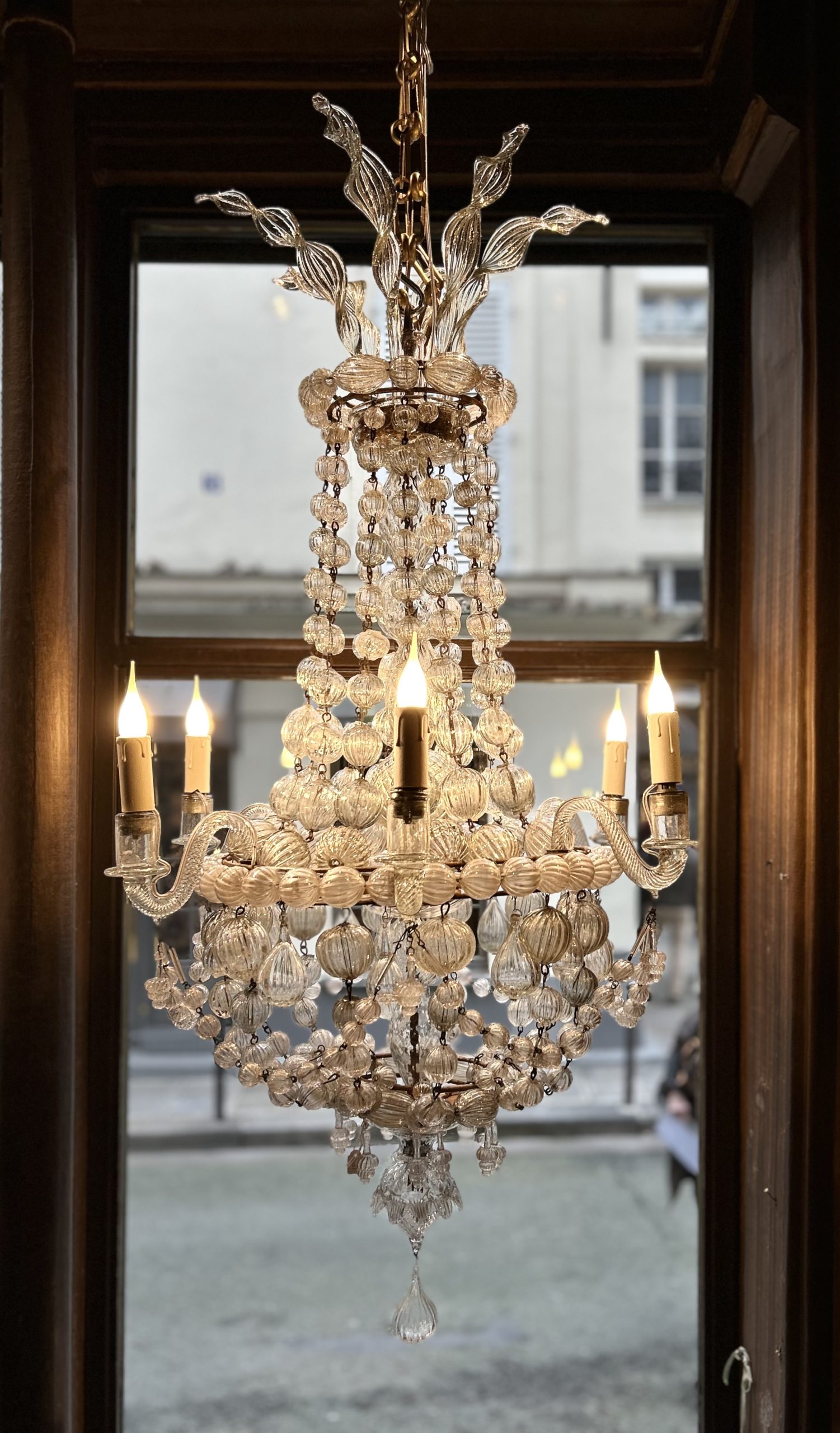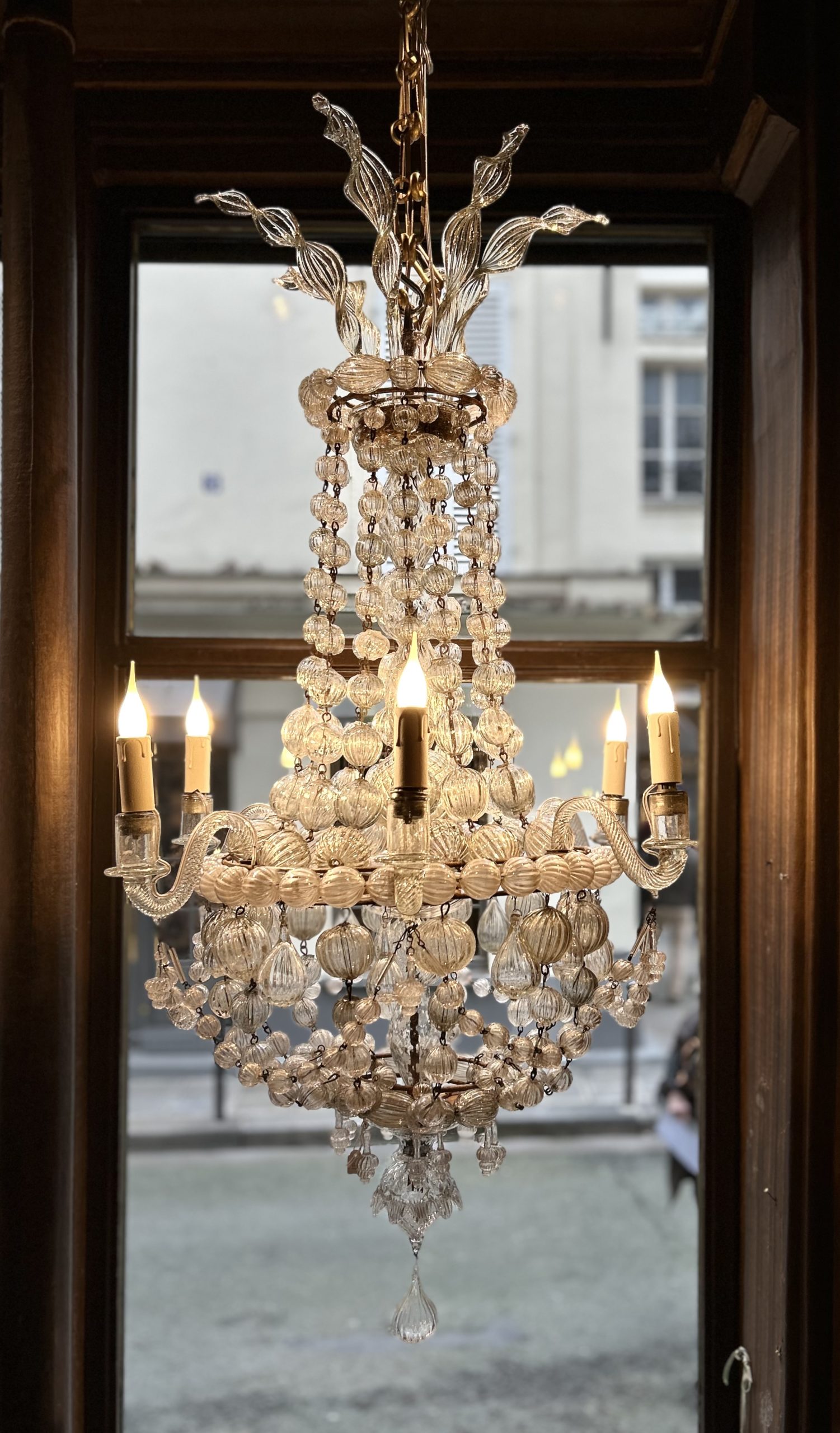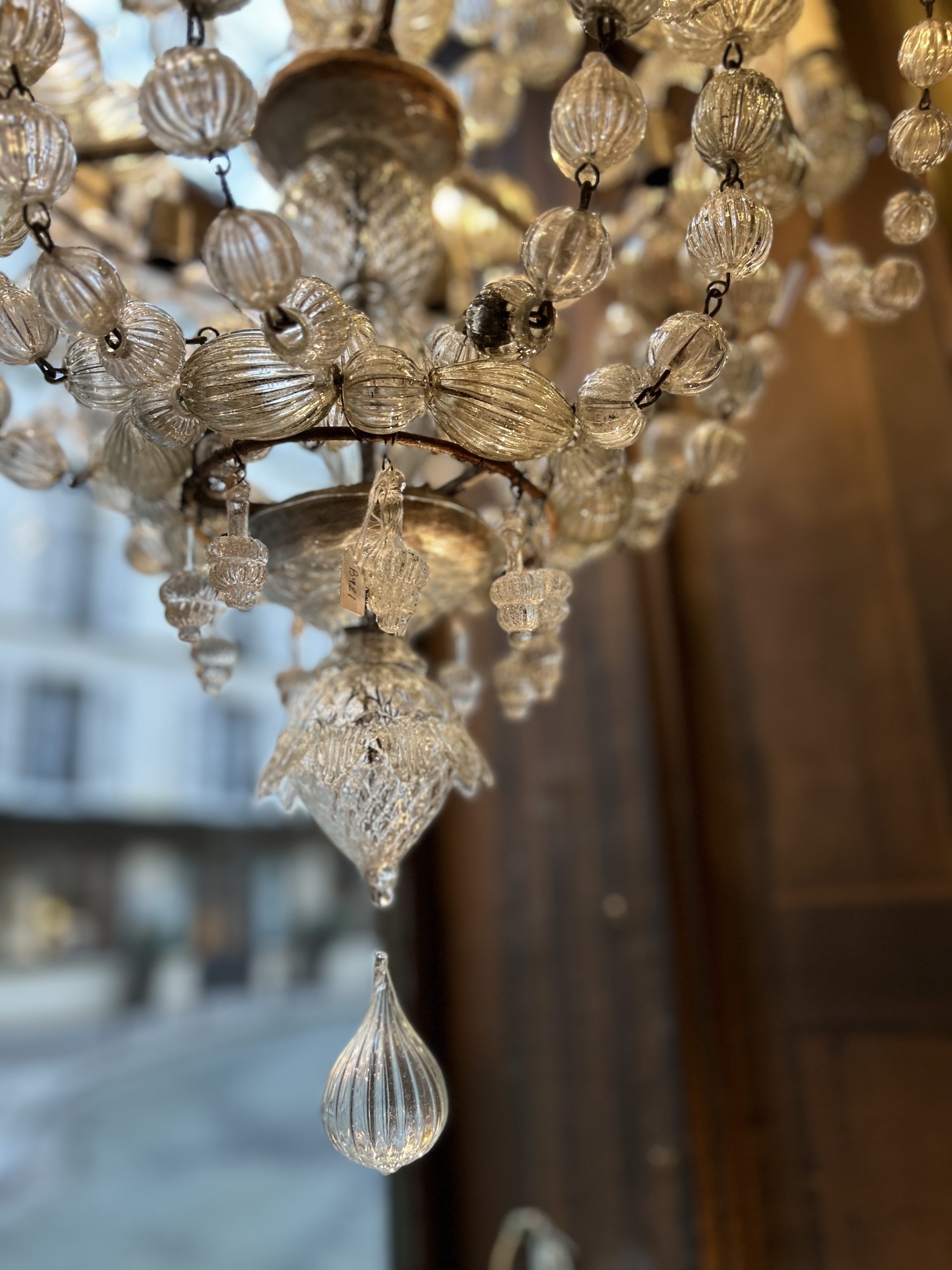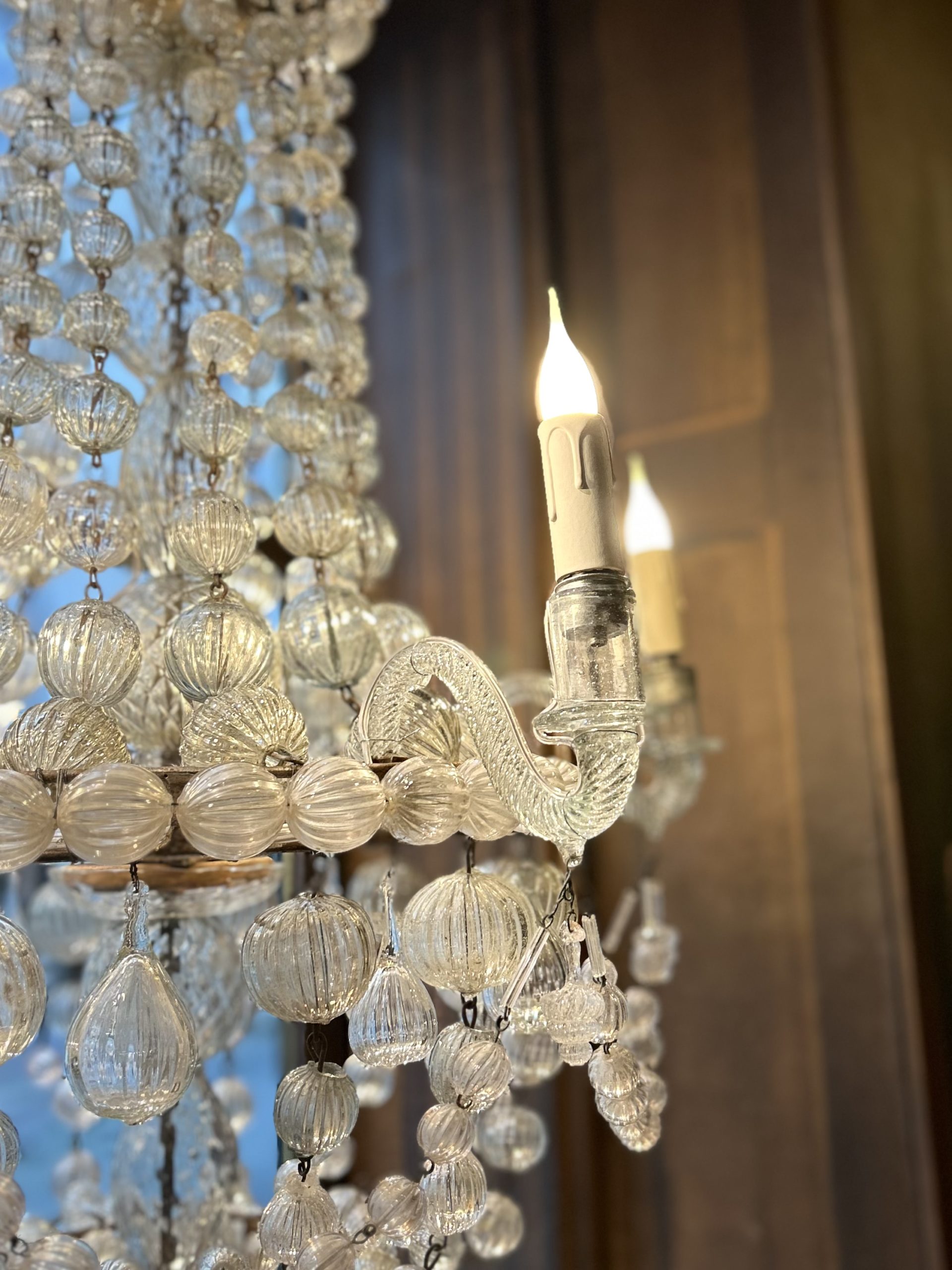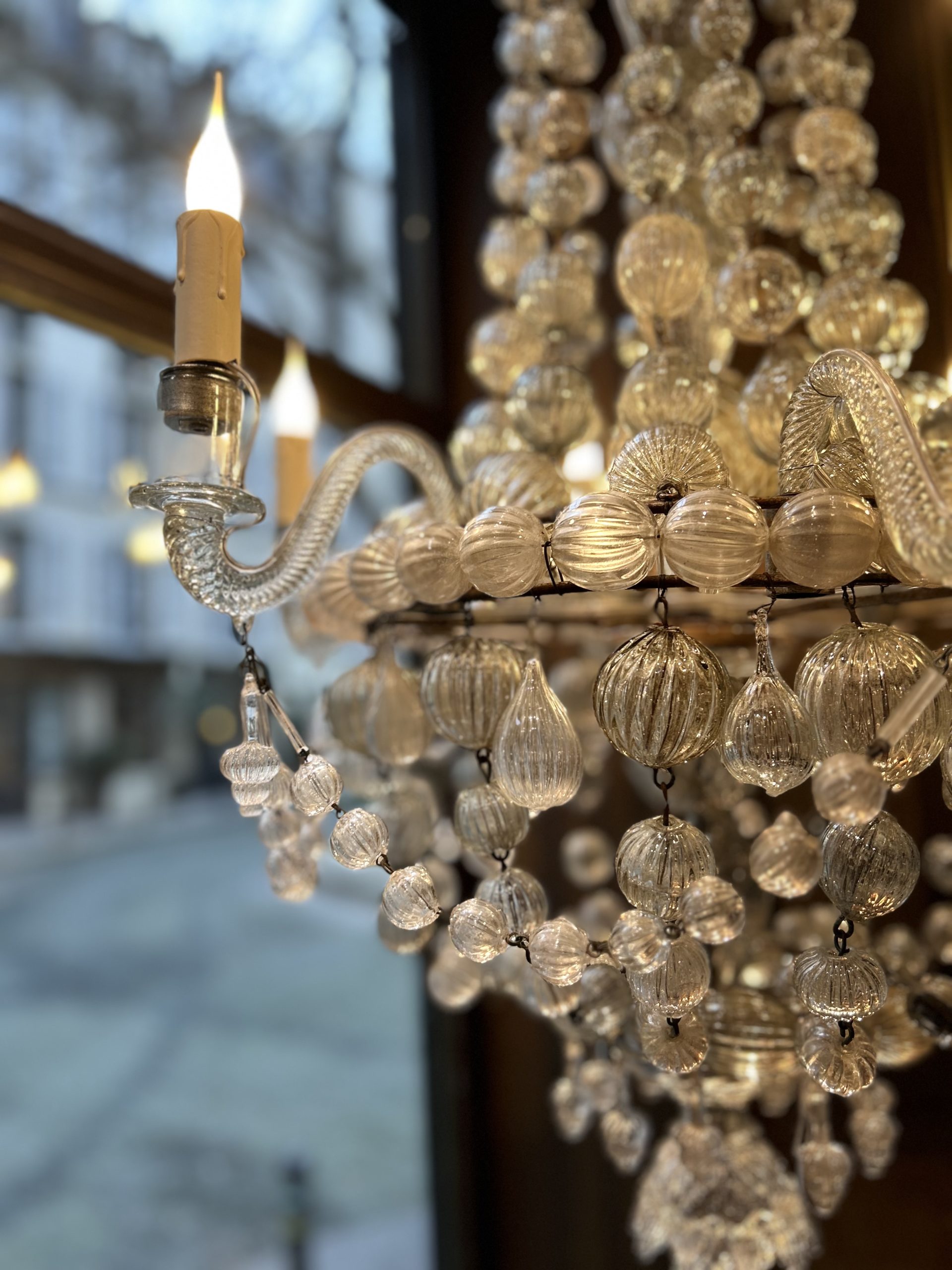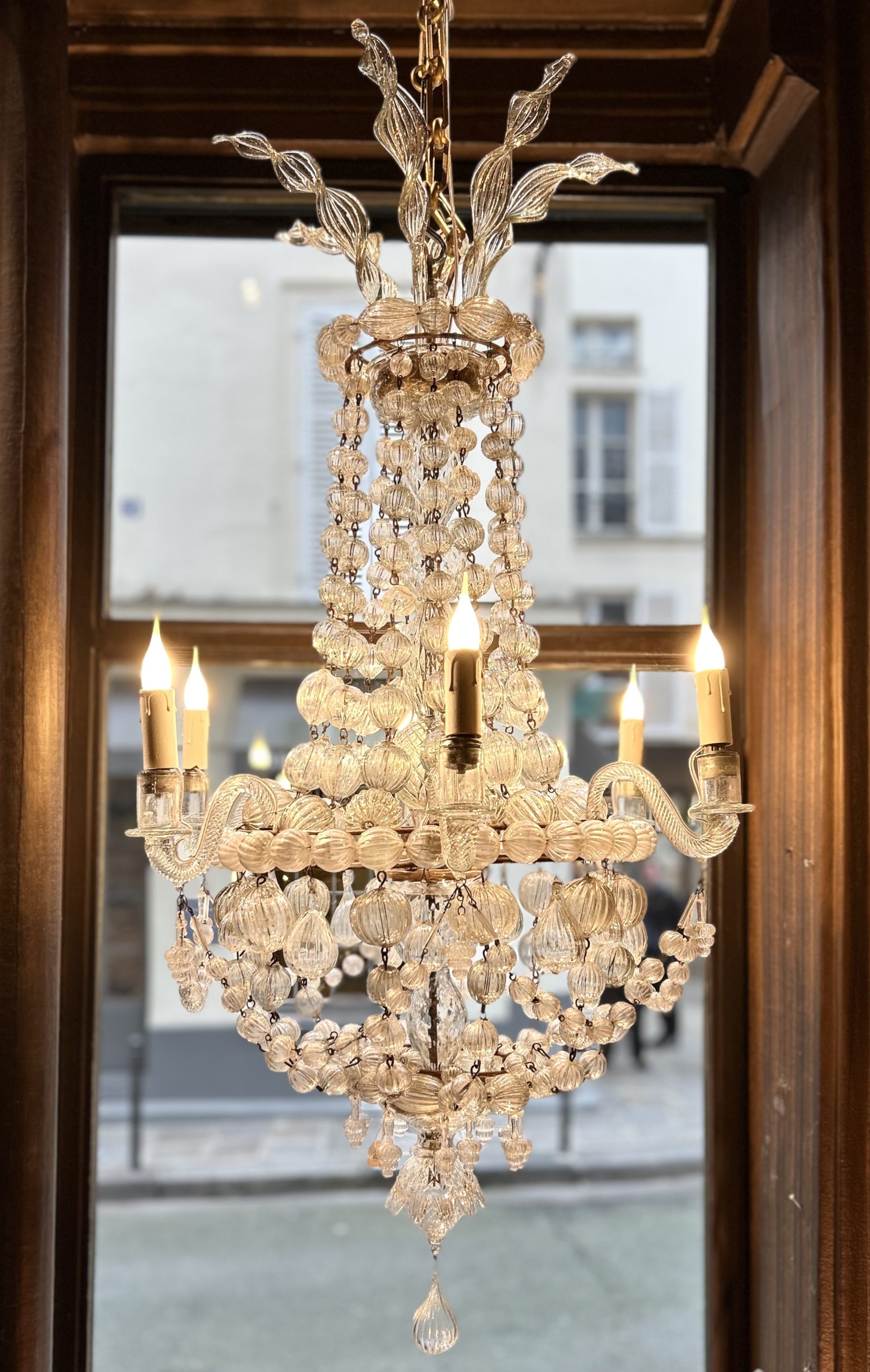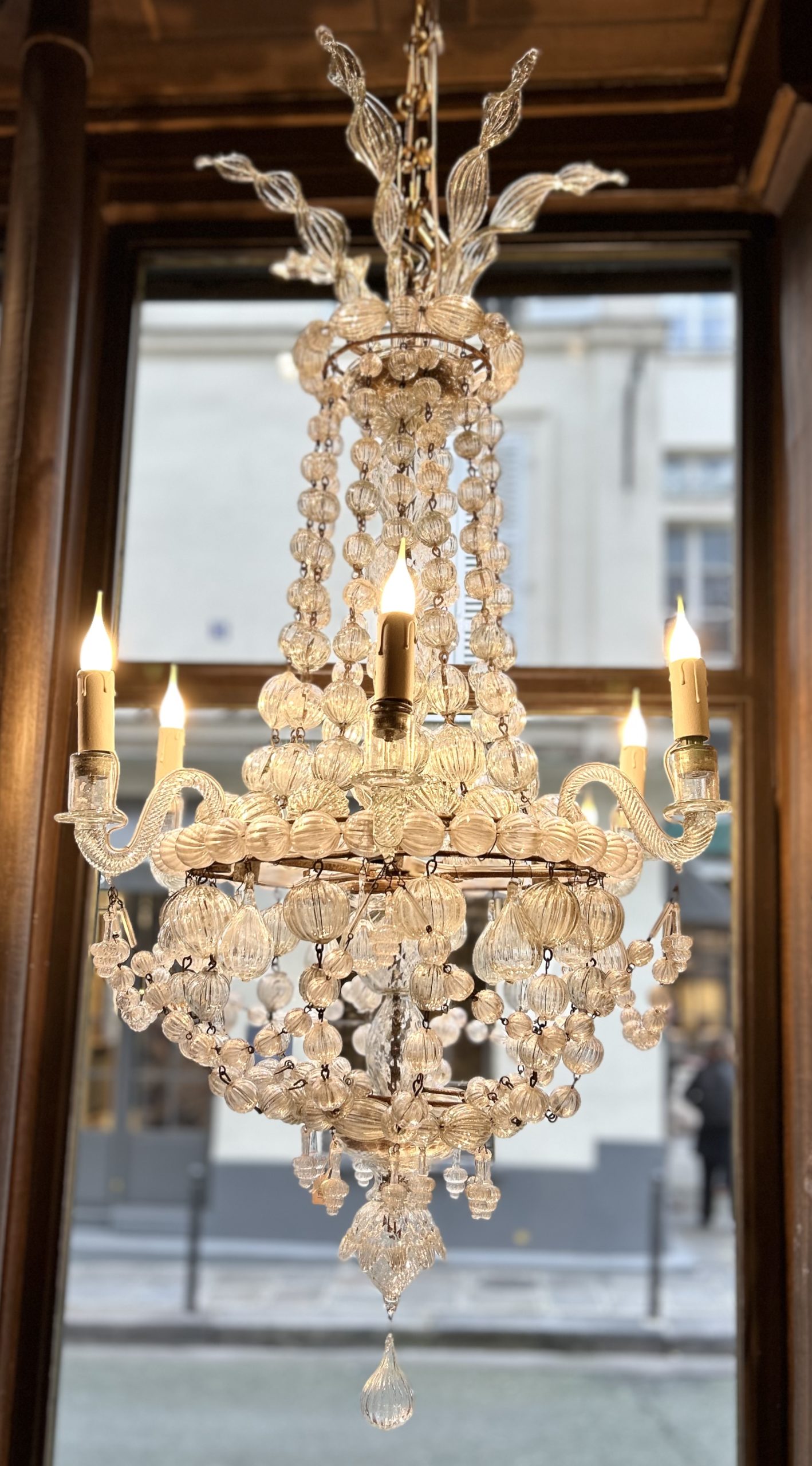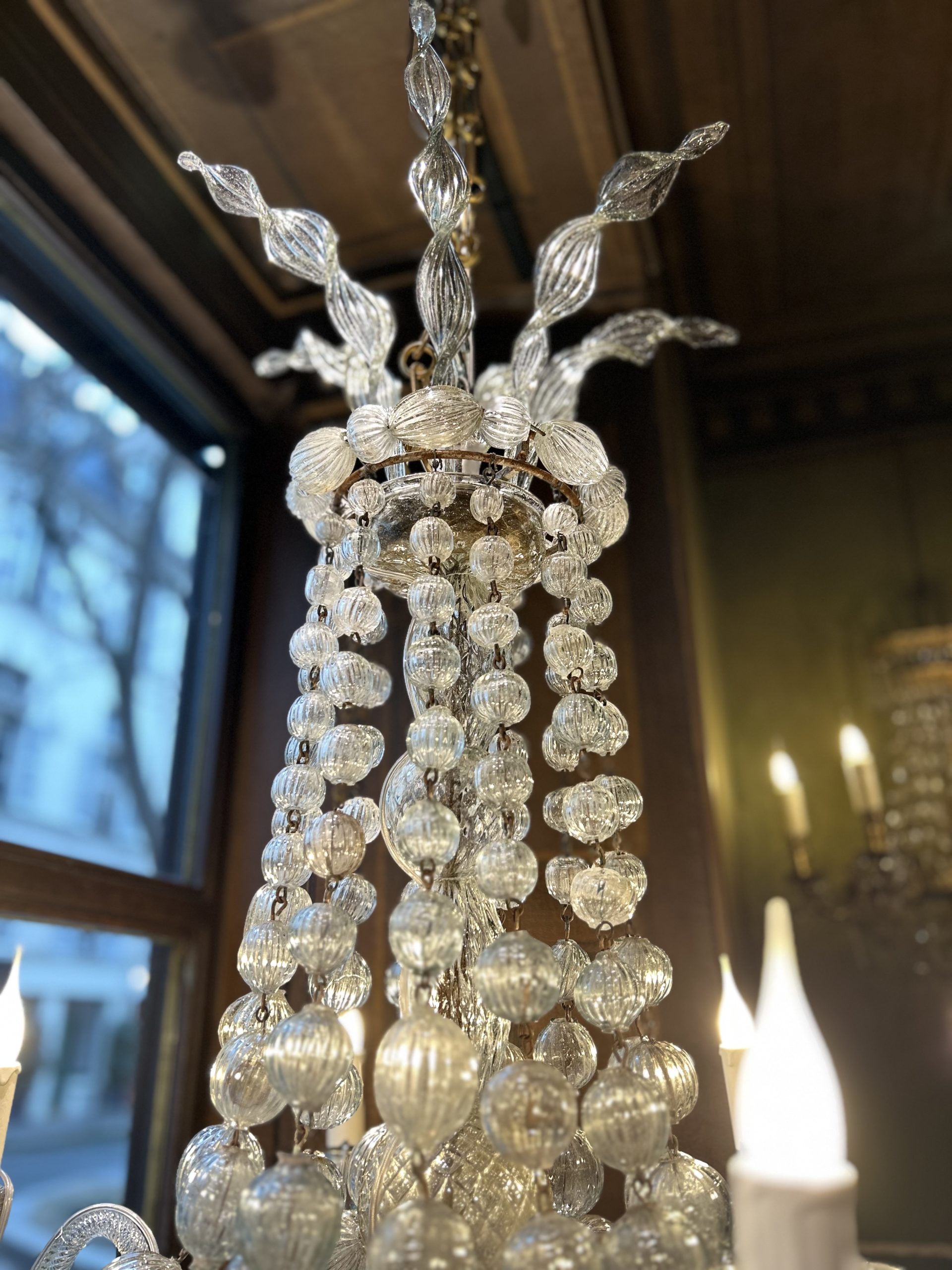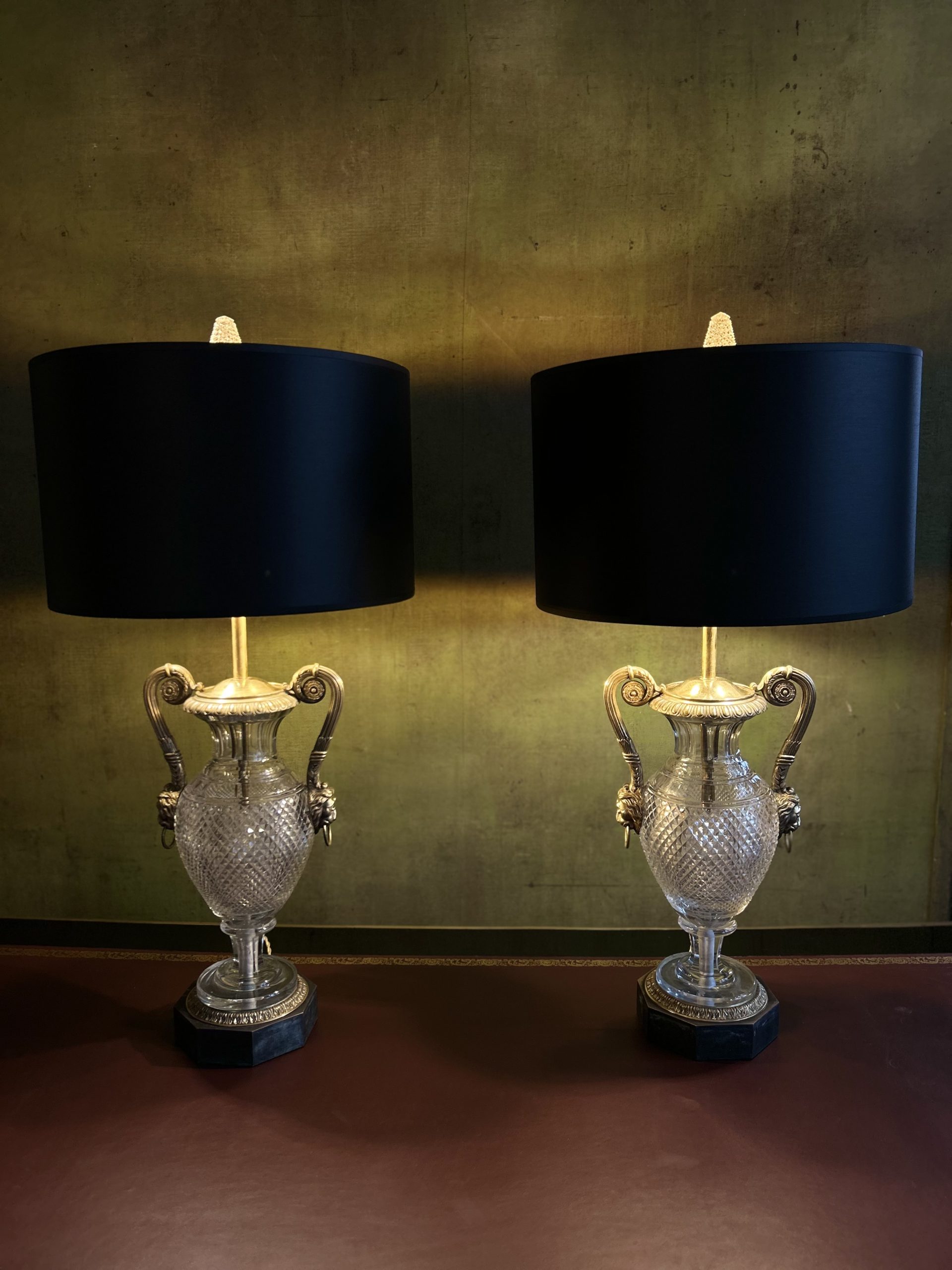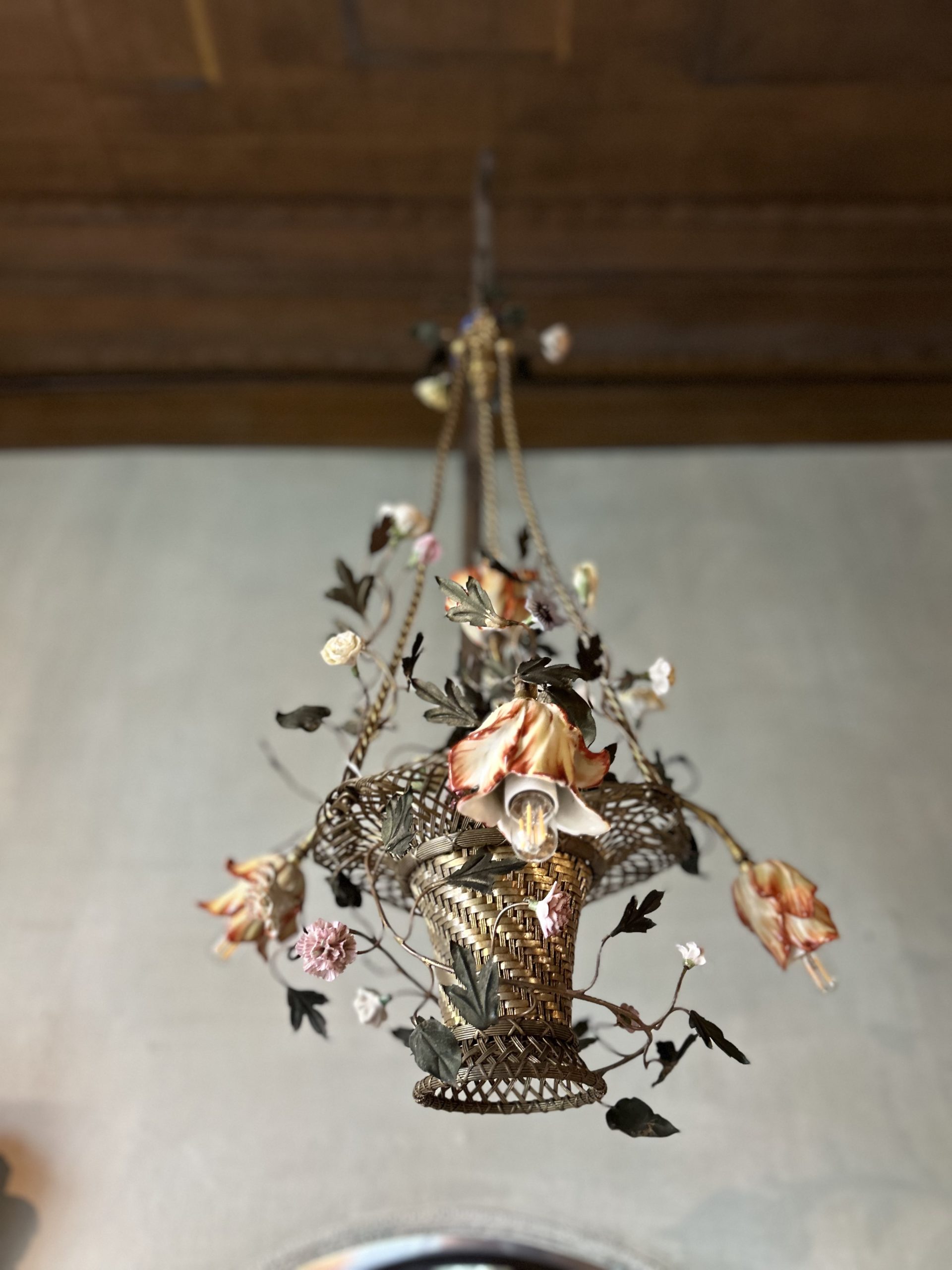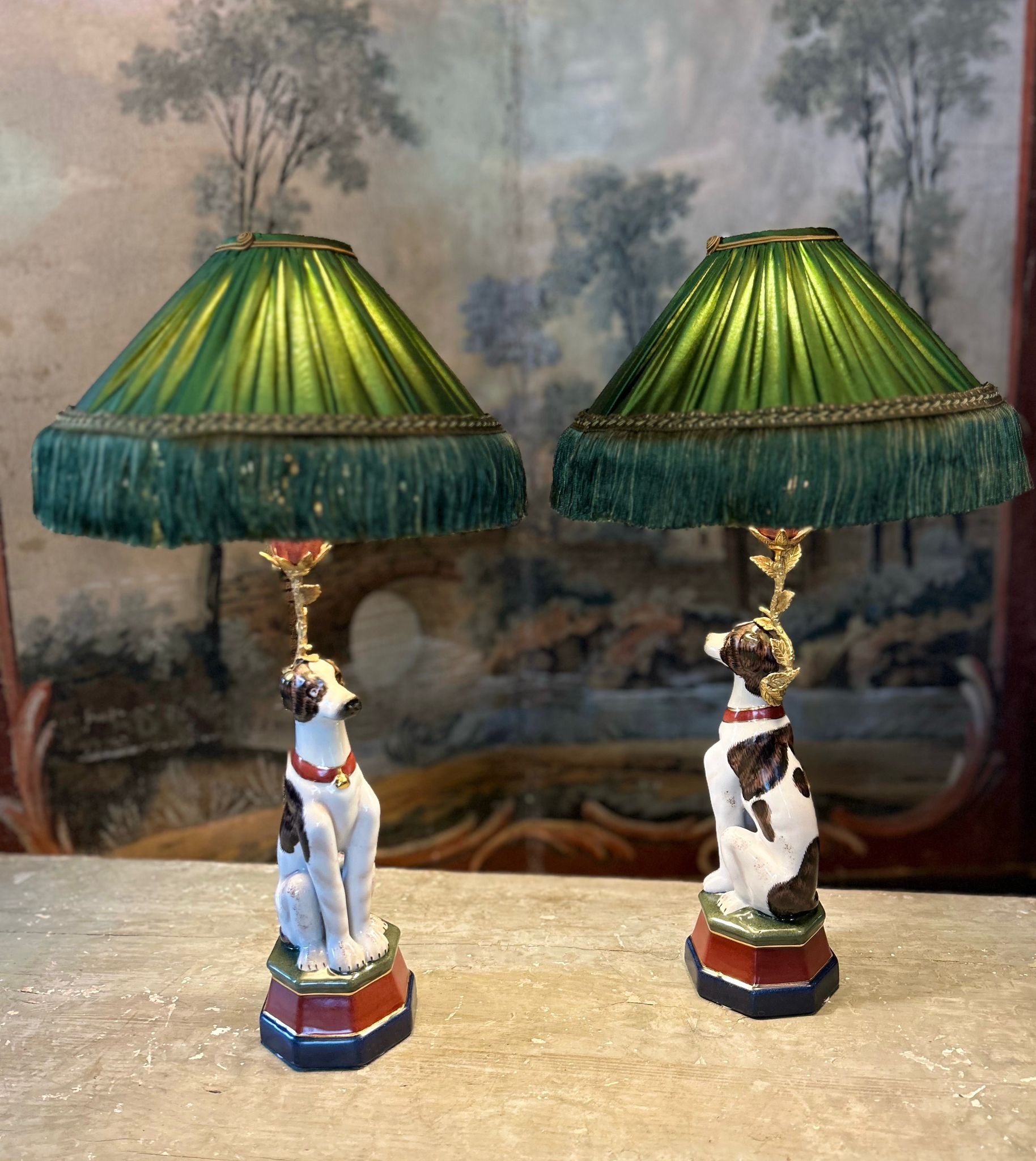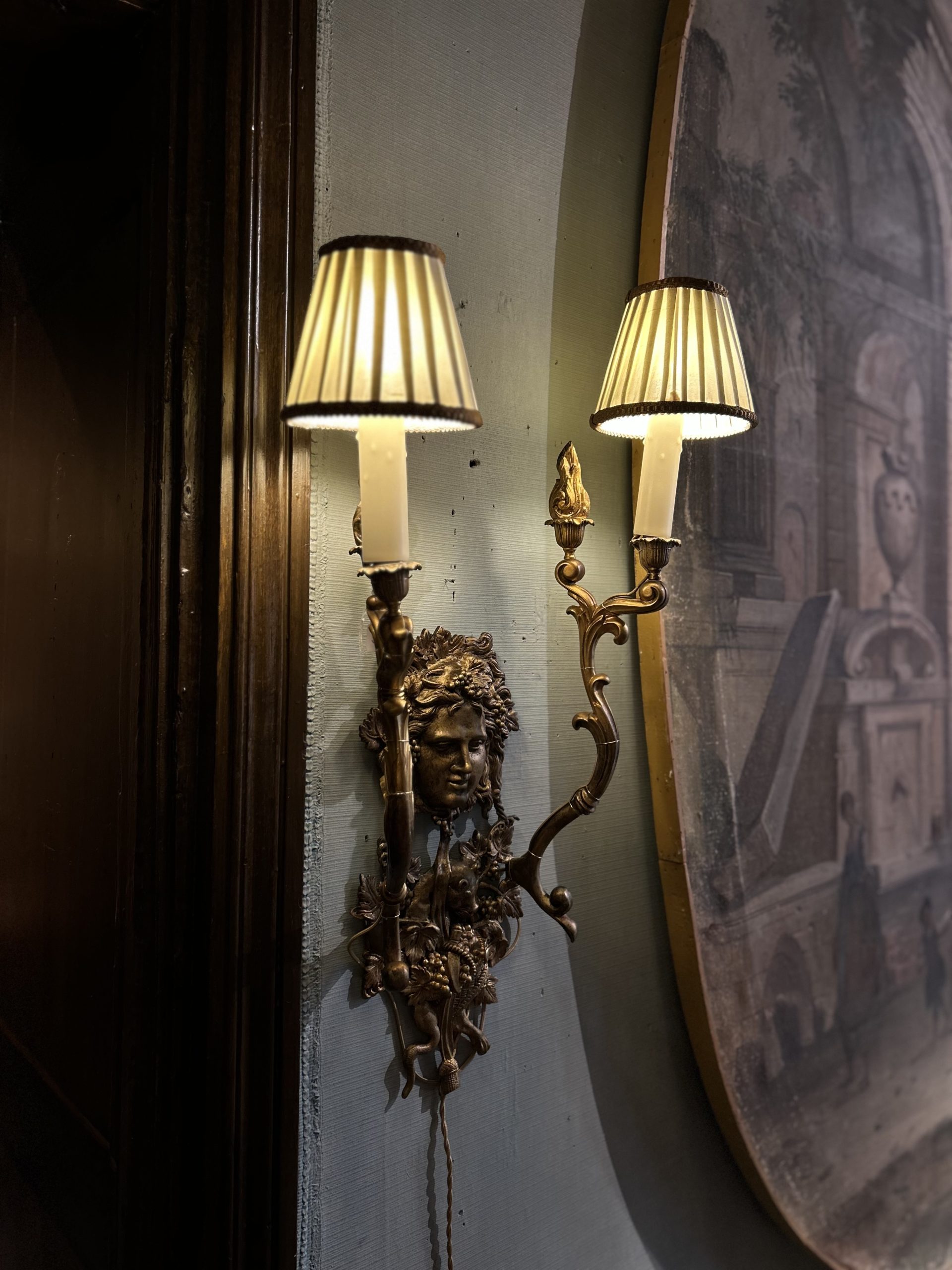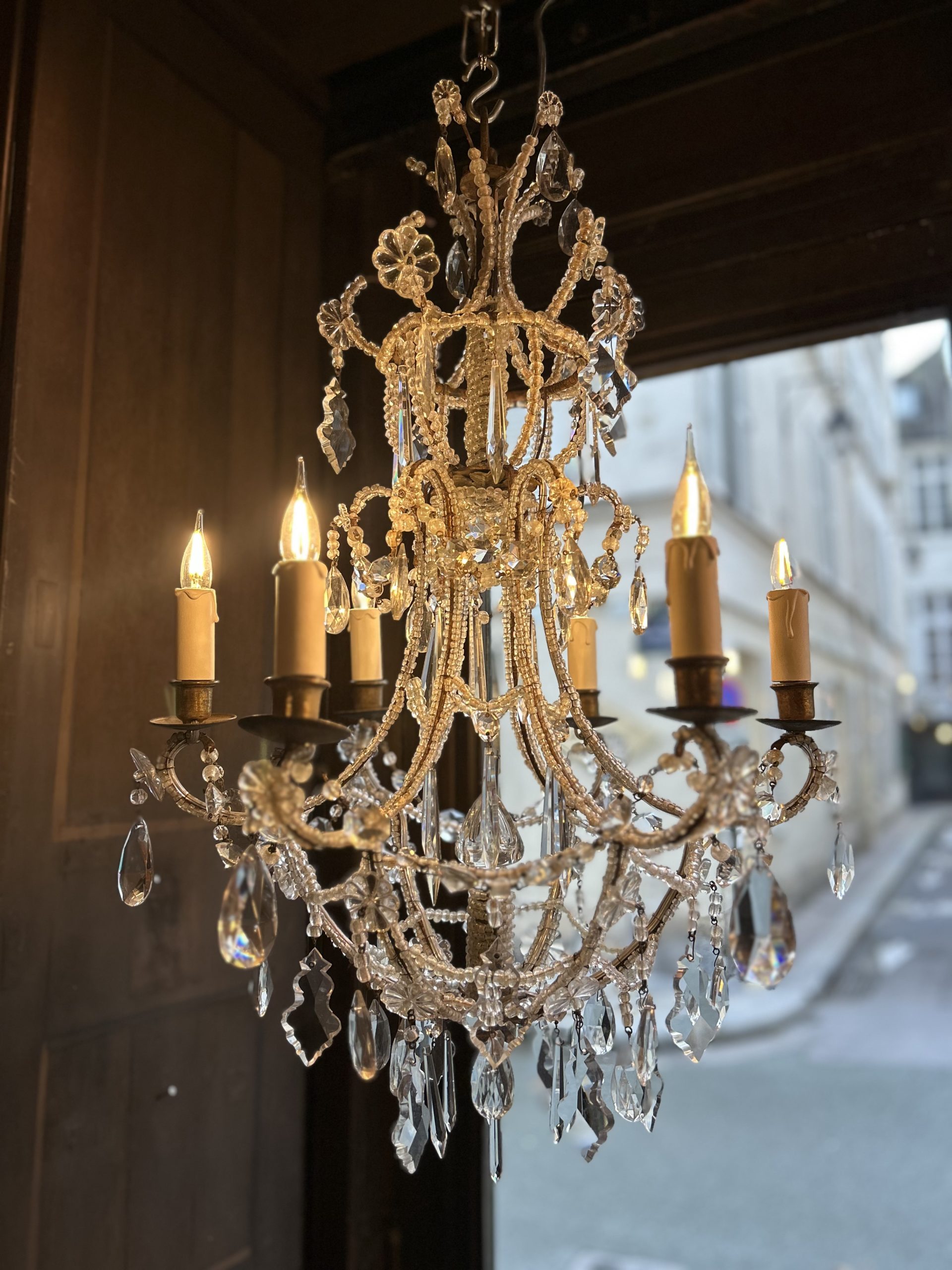Charming chandelier with 6 arms of light in blown Murano glass.
Glassmaking in Venice dates back to the 8th century, thanks to expertise originally brought by the Egyptians and then developed by the Byzantines who fled Constantinople. After the glassmakers’ furnaces caused fires in the city, a 13th-century decree forced them to settle further away on the small island of Murano. This is where the real story begins; this transfer helped preserve a preciously guarded manufacturing secret. This activity was highly regulated; it brought certain privileges to master glassmakers, but in return, it prohibited them from working elsewhere. The story even goes that “deserters” were hunted down and assassinated by special agents of the Venetian state. All the courts of Europe placed orders for and were raving about the luxurious objects made in Murano, such as glass, jewelry, vases, mirrors, and chandeliers. They dreamed of discovering the manufacturing secrets so they could reproduce them in their own countries. Murano glass reached its peak between the 16th and 18th centuries when the technique that allowed the coloring of glass paste was discovered, opening the door to an infinite wealth of creation. But in 1805, when the Republic of Venice fell under the control of the Austrian Empire, Bohemian crystal took over Murano glass art and production continued to decline.
Murano was almost forgotten until the early 1900s, when a stylistic revival, particularly with Art Nouveau and Art Deco, brought the objects produced in its furnaces back into fashion. First of all, Murano only uses glass, never crystal, as lead is strictly prohibited in its formulation. Since lead increases the transparency of the glass and eliminates small air bubbles, the primary characteristic of Murano glass is precisely that it is never perfectly translucent and contains small bubbles. Manufacturing techniques are passed down from father to son, and the pieces are always handcrafted, either blown or spun. Thus, each piece is unique and may present irregularities and asymmetries, a guarantee of completely artisanal work.
Electrification to standards
Venice, Italy
Circa 1900
Height: 110cm
Diameter: 70cm

